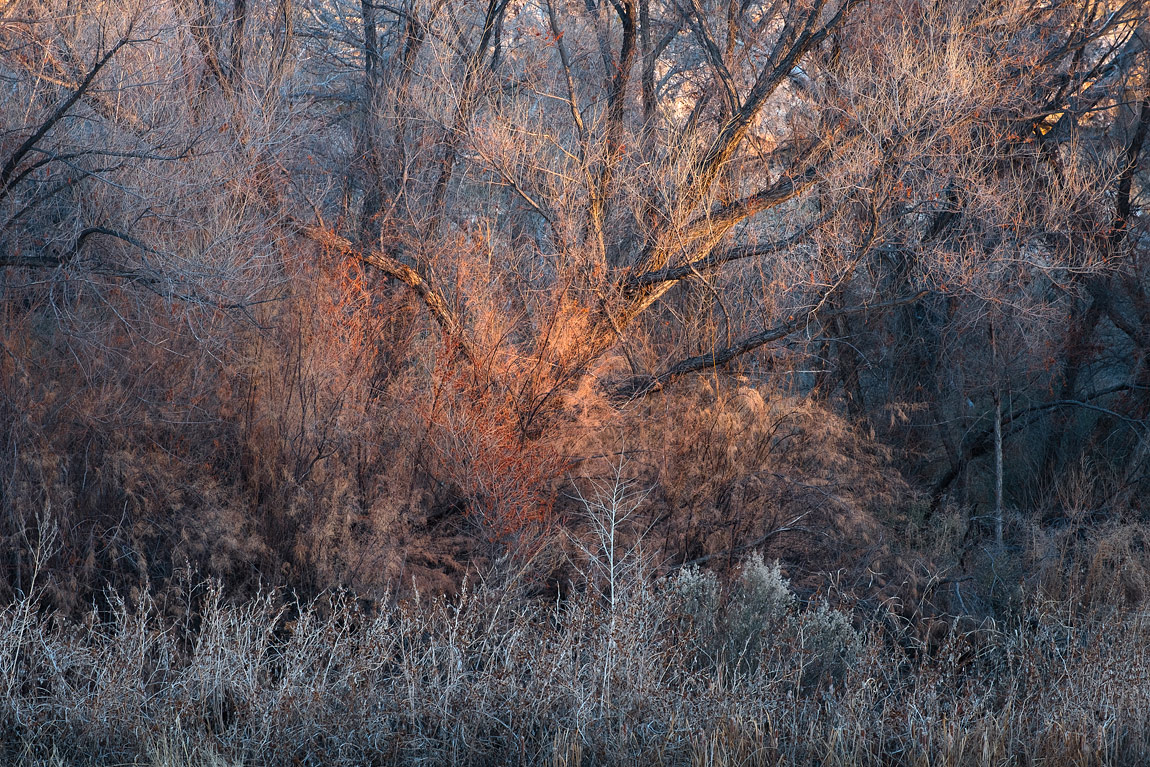I have always been fascinated by trees, especially deciduous trees that shed their leaves each autumn and then awaken with new leaves in the spring. My favorite time to take pictures of trees, though, is during the late fall and winter when the leaves have fallen. It is at this time that you can really see the structure – the bones – of the tree. If you can get some withered rust or orange colored leaves still hanging on, you can get a nice boost of color to the often subdued brown/gray color palate.
A few days before I took this image I noticed that the late evening sun briefly spotlights this tree just before sinking below the surrounding hills. When it does, the tree lights up and pops out of the surrounding stand of trees and low lying bushes. I didn’t have my camera with me the day I first noticed this but I marked the time for a future visit and photo.
A couple of days later I returned to this spot, set up my camera with a remote shutter release and waited. The conditions were favorable: mostly clear skies with an unobstructed western horizon and not a breath of a breeze. I knew that the light I wanted would only last a few seconds so while I waited I honed in on the composition, moving slightly up/down and right/left until I was satisfied that the frame contained only what I wanted. As the sun sank lower on the western horizon, I kept adjusting the shutter speed to compensate for the fading light.
I watched the light gradually shift with parts of the stand of trees receding into shadow. The light crept across the frame slowly until it finally illuminated this tree in a golden light. At first the light was strong, creating dark shadows and bright highlights. Knowing that this would change I waited. At last, just as the sun was sinking below the horizon the light softened. I pressed the remote shutter release to record this moment of beauty. A few seconds later (and a couple of additional images taken), the light was gone. The stand of trees receded into shadow and the moment was over.


